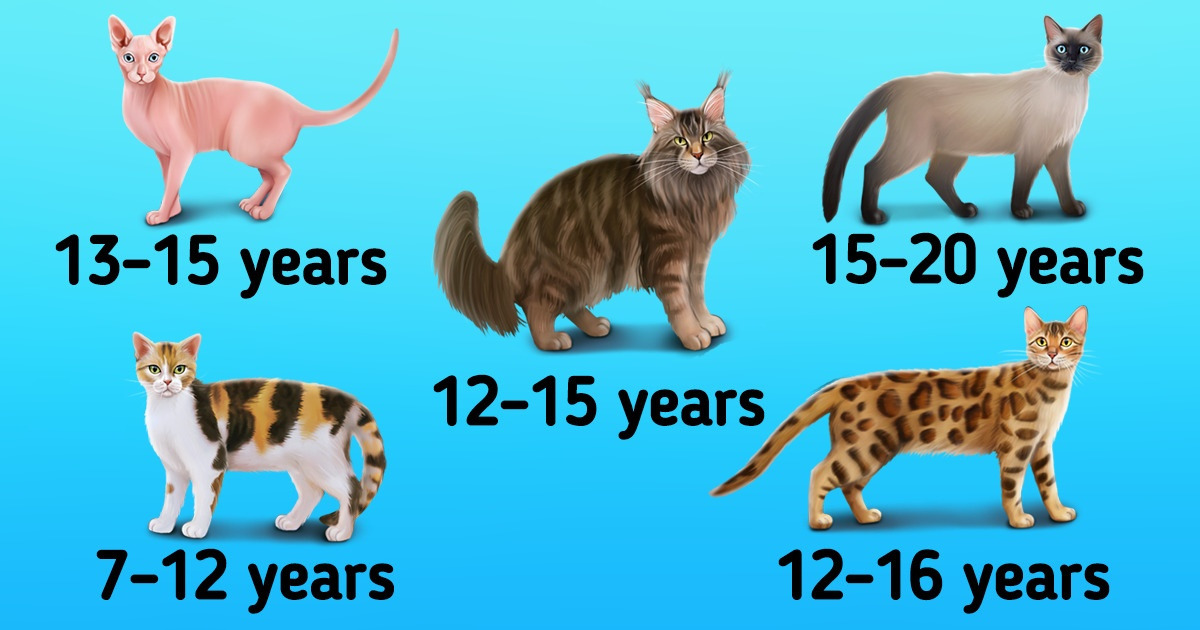
How Long Cats of Different Breeds Live

Cats are probably the most popular pets. Their average lifespan is 13 to 17 years, but it can vary from breed to breed. It’s worth mentioning that these are average numbers, and many factors affect a cat’s lifespan.
5-Minute Crafts would like to tell you about how long cats of different breeds live.
What affects a cat’s lifespan
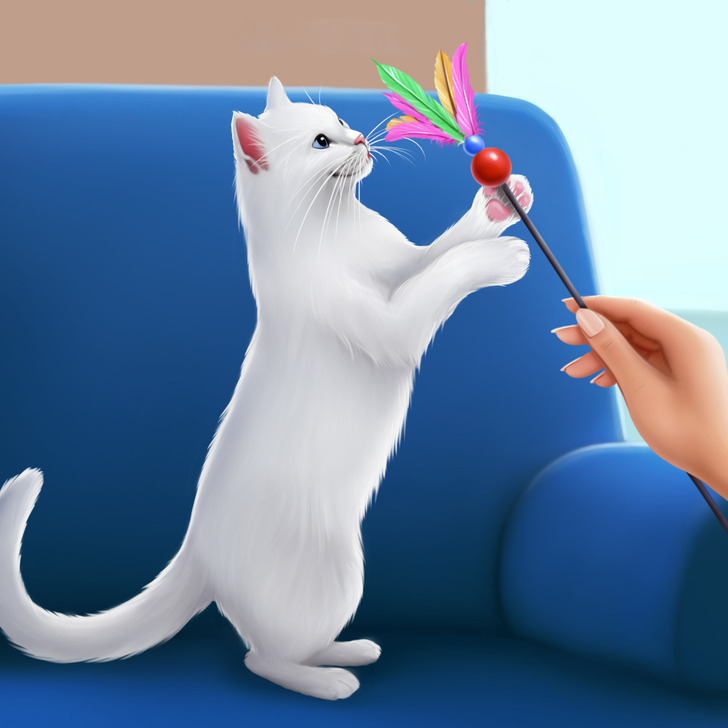
- Your pet’s diet should be proper and balanced. It doesn’t matter if you feed it natural food or dry food, it should receive all necessary nutritional elements for a fulfilling life.
- Clean and fresh water improves the pet’s quality of life.
- Physical activity is also very important for extending your cat’s life. Play and exercise with your 4-legged friend as often as possible.
- Weight control, as obesity is very dangerous not only for humans but also for animals. Control your cat’s weight, and if necessary, your vet can prescribe a diet.
- Health: Take good care of your pet’s health. Visit a vet regularly, do all the necessary vaccinations and other procedures.
- Neutered cats live longer, as they are less susceptible to diseases of the reproductive system.
- Hygiene is important, so keep your cat clean and wash it if necessary. Don’t forget to brush your pet, especially during the shedding season.
- Parasites could be present, so check your pet regularly for them. They can be dangerous.
- Roaming cats that hang out outside tend to live shorter lives. They are susceptible to a number of dangers, such as traffic accidents, diseases, and attacks from other animals.
Which cats live longer
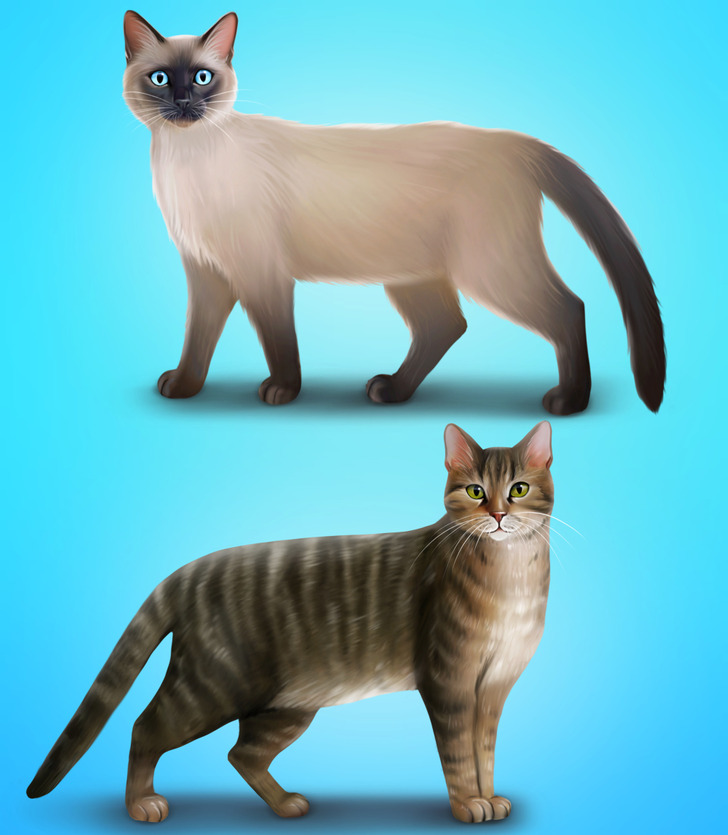
Male or female
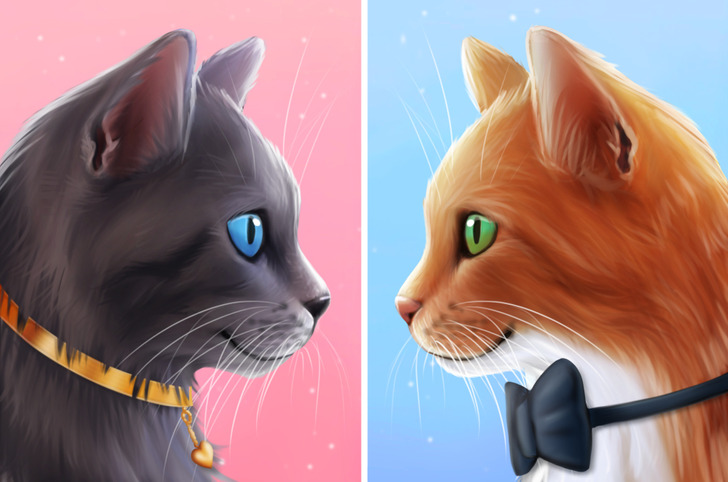
Many owners are interested in whether a pet’s sex affects its life expectancy. On average, female cats live longer than male cats. The difference is 1-2 years.
It’s also noted that neutered male cats live 62% longer than non-neutered ones. And the lifespan of neutered female cats is usually 39% longer than that of unneutered ones.
Lifespans of different breeds
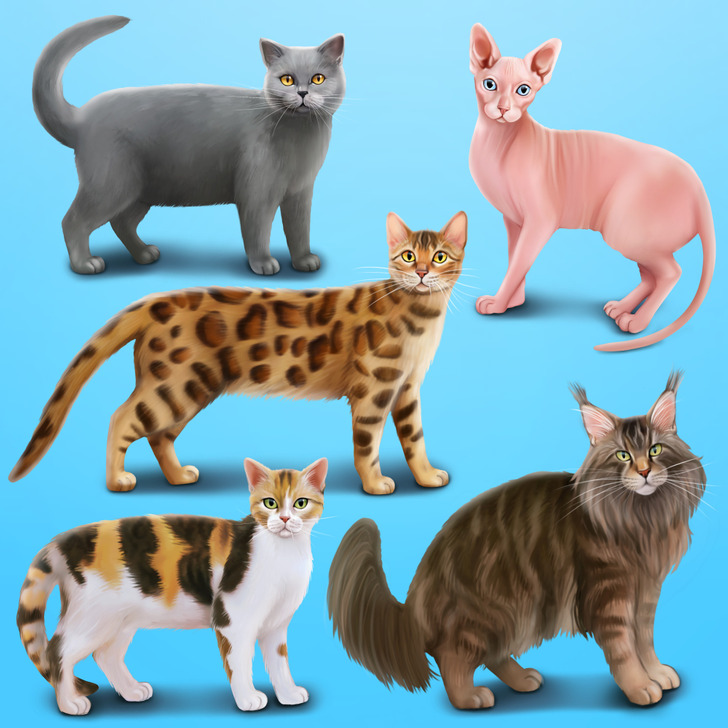
Abyssinian — 9-15 years
Australian Mist — 14-19 year
American Bobtail — 13-15 years
American Wirehair — 7-12 years
American Curl — 15+ years
American Shorthair — 15-20 years
Turkish Angora — 12-18 years
Balinese — 18-22 years
Bengal — 12-16 years
Birman — 12-16 years
Bombay — 15-20 years
British Shorthair — 12+ years
Burmilla — 10-15 years
Oriental — 10-15 years
Havana Brown — 12-15 years
Himalayan — 15+ years
Devon Rex — 9-15 years
European Shorthair — 15-22 years
Egyptian Mau — 13-16 years
California Spangled — 9-16 years
Cymric — 8-14 years
Colorpoint Shorthair — 12-16 years
Korat — 15+ years
Cornish Rex — 11-15 years
LaPerm — 10-15 years
Munchkin — 12-14 years
Maine Coon — 12-15 years
Manx — 8-14 years
German Rex — 9-14 years
Nebelung — 15-18 years
Norwegian Forest — 14-16 years
Ocicat — 10-15 years
Persian — 15+ years
Pixiebob — 12 years
Selkirk Rex — 10-15 years
Siamese — 15-20 years
Siberian — 11-15 years
Singapura — 9-15 years
Sokoke — 9-15 years
Somali — 10-12 years
Sphynx — 13-15 years
Tonkinese — 10-16 years
Turkish Van — 12-17 years
Ceylon — 15 years
Chantilly-Tiffany — 14-16 years
Scottish Fold — 15 years
Exotic Shorthair — 12-14 years
Javanese — 10-15 years
Japanese Bobtail — 15-18 years
You can see the average lifespan of different cat breeds above.
Signs of aging in cats
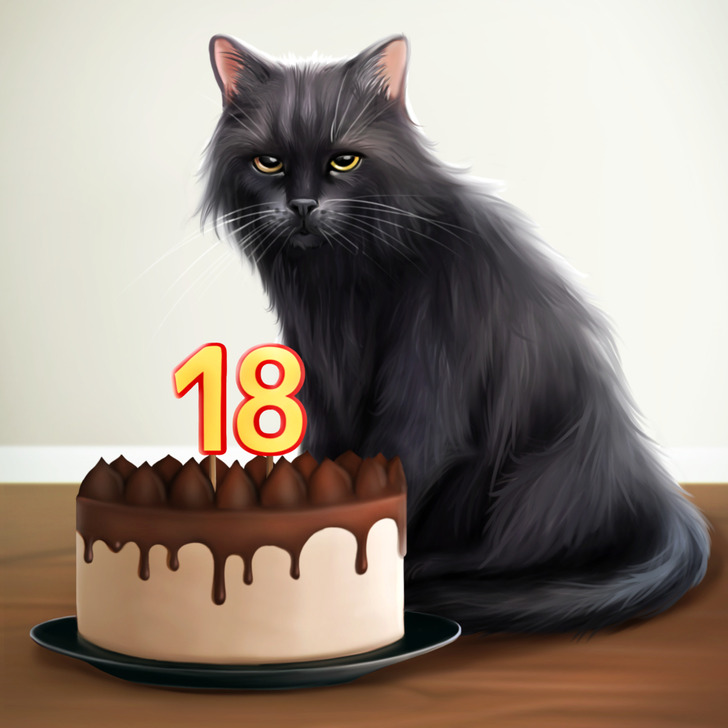
- Decreased mobility: Cats often become slower as they age. They move, jump, and play less. Some animals develop arthritis that needs to be treated, so pay close attention.
- Digestion issues: Some cats may experience problems with bowel movements as they age. Monitor your pet closely and if you notice constipation or difficulty trying to defecate, see a vet.
- Decreased appetite: Older cats don’t need as much food as younger ones. So they start to eat less.
- Personality changes: As your cat ages, changes in behavior and personality may start to show. This is quite normal. But if the changes are serious and they bother you, contact your vet.
- Changes in looks: Over the years, your pet’s skin, coat, and paw pads can change in quality and appearance. In older cats, the coat often becomes thinner and loses its luster, and dark сats get gray hair. You may also notice that the skin on the cat’s body becomes thinner, the pads on their paws, on the contrary, are denser, and the nails are more brittle.
- Vision loss and cloudy eyes: Elderly cats can completely or partially lose their vision. If your pet has dilated pupils and starts to bump into objects, see a vet. Also, as cats age, their eyes can become cloudy.
- Increased thirst: If your cat has begun to drink more, don’t ignore this symptom. Intense thirst can be a sign of diabetes, hyperthyroidism, and chronic kidney disease, which affect adult and elderly cats.
- Frequent urination: Elderly cats begin to go to the toilet more often, and sometimes outside the litter box. Frequent urination can be a sign of chronic kidney disease, hyperthyroidism, or urinary tract infections.
- Increased vocalization and disorientation: Elderly cats show increased vocalization (meowing), especially at night, and can act confused or disoriented. This condition in animals can be compared to dementia in humans.
The oldest cat in the world
To date, the first place among oldest cats is officially occupied by Creme Puff, who lived in Texas. She was born on August 3, 1967, and died on August 6, 2005. The cat lived 38 years and 3 days. This was recorded in the Guinness World Records.
The owner fed the cat bacon, eggs, asparagus, and broccoli. The man also had a male cat, who lived a very long life too — more than 34 years.